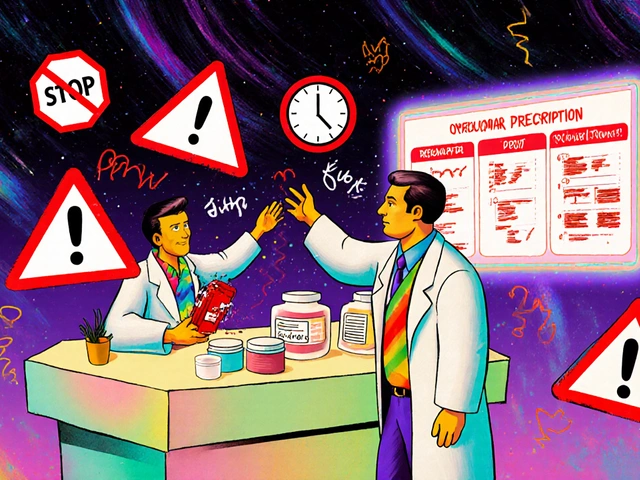Amoxil Alternatives: What Works When Amoxicillin Isn’t Ideal
If your doctor suggested Amoxil (amoxicillin) but it didn’t fit—maybe because of an allergy, resistance, or a specific infection—you’re not stuck. There are several other antibiotics that hit the same bugs without the same drawbacks. Below we’ll break down why you’d look for another drug and which ones are worth checking out.
Why Look for Alternatives?
First off, amoxicillin is a favorite because it’s cheap and covers many common infections. But bacteria can become resistant, especially after repeated courses. Allergic reactions range from mild rash to severe breathing trouble, so doctors need safe swaps. Also, some infections (like certain ear or skin bugs) respond better to a different class of drugs.
Top Amoxil Alternatives You Can Consider
Doxycycline: A broad‑spectrum tetracycline that works well for respiratory infections, acne, and tick‑borne diseases. It’s taken once or twice daily and doesn’t need a stomach‑acid boost.
Clindamycin: Great for skin and soft‑tissue infections when MRSA is a concern. It can be given orally or IV and penetrates bone well, making it useful for dental abscesses.
Azithromycin (Z-Pak): A macrolide that stays in the body long enough to finish a short three‑day course. Good for chlamydia, some sinus infections, and people who can’t tolerate penicillins.
Cefuroxime: A second‑generation cephalosporin that covers many of the same bugs as amoxicillin but with a different chemical structure. It’s often chosen for ear infections and bronchitis when resistance is suspected.
Levofloxacin: A fluoroquinolone reserved for tougher cases like complicated urinary tract infections or certain lung infections. Because it can affect tendons, doctors use it only when other options fail.
When you’re picking a replacement, your doctor will weigh the infection type, how severe it is, and any personal health factors (like kidney function). Always discuss potential side effects—some alternatives can cause stomach upset or photosensitivity.
If cost is a concern, many of these drugs have generic versions that are affordable. Pharmacy discount programs or price‑comparison tools can help you find the best deal without compromising safety.
Remember, finishing the full prescribed course matters even if you feel better early on. Stopping too soon lets bacteria bounce back stronger and can lead to resistance—exactly what we’re trying to avoid by choosing a good alternative in the first place.
Bottom line: Amoxil isn’t the only answer for common infections. With a clear picture of why you need a swap, your doctor can select an antibiotic that tackles the bug, respects your health, and keeps costs reasonable. Talk openly about allergies, past experiences, and any concerns—you’ll leave the appointment with confidence in the new prescription.
6 Alternatives to Amoxil: Choosing the Right Antibiotic
Not every infection can be knocked out by Amoxil, and sometimes your body or bacteria just doesn't play nice. This guide breaks down six practical alternatives to Amoxil, looking at what each brings to the table—and what drawbacks come with them. It walks you through pros and cons so you know what to expect and helps you make sense of why a doctor might switch things up. You’ll also get some tips for talking to your provider about the best choice. If you’re fed up with guessing what drug to trust, this is for you.






